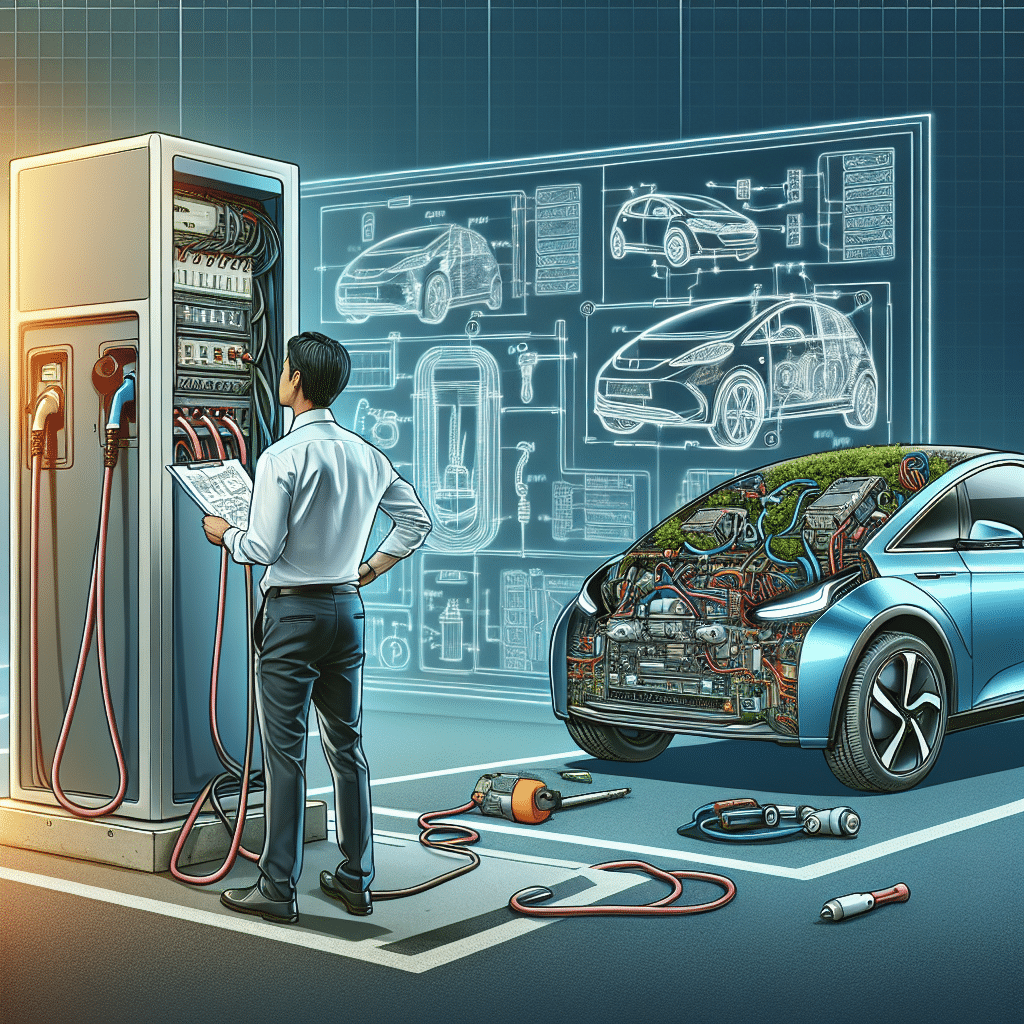Understanding EV Charging Systems
Electric vehicles (EVs) have become increasingly popular due to their environmental benefits and efficiency. However, as with any technology, charging issues can arise. Understanding the components involved in EV charging is essential for troubleshooting. EV charging systems typically include the vehicle’s internal charging system, the charging station (or Electric Vehicle Service Equipment – EVSE), and the electrical infrastructure connected to it.
Common EV Charging Issues
-
Vehicle Not Charging
- Check the Connection: Ensure the plug is firmly seated in both the vehicle’s port and the charging station.
- Inspect the Charging Port: Dirt or damage can prevent a proper connection. Clean the charging port with a soft, dry cloth.
- Vehicle Fault Codes: Check for any error messages on the vehicle’s display that could indicate a specific issue.
-
Charging Station Malfunction
- Power Supply Issues: Confirm that the charging station has power. Look for indicator lights on the unit; if they are off, check the circuit breaker.
- Faulty Station: If the charging station functions intermittently, it may require servicing. Contact the manufacturer for troubleshooting steps.
Checking the Electrical Infrastructure
-
Breaker and Circuit Check
- Locate the Breaker Box: Identify the circuit breaker that powers the charging station. If it has tripped, reset it and try charging again.
- Check for Overloads: Ensure that the circuit isn’t overloaded by checking other devices sharing the same circuit.
-
Voltage Drop
- Measure Voltage Levels: Use a multimeter to check the voltage at the charging station. A significant drop from the expected voltage can indicate wiring issues or overloaded circuits.
- Long Distance Wiring: If the charging station is far from the power source, consider shorting the distance or upgrading the wiring to minimize voltage drop.
Charger Compatibility Issues
-
Charging Standard Compliance
- Check Charging Standards: Different EVs use varying charging standards (level 1, level 2, and DC fast charging). Ensure your EV and charger are compatible.
- Use Manufacturer Recommendations: Refer to the vehicle and charging station manufacturer’s guidelines for compatible models and recommended setups.
-
Adapter Compatibility
- Review Adapter Specs: If using an adapter to connect the EV to a charging station, ensure it is compliant with both the vehicle’s and station’s specifications.
Inspecting the EV’s Internal Systems
-
Battery Health Status
- Battery Management System (BMS): BMS monitors and protects the battery. Access the vehicle’s display or app to check battery health and status.
- Thermal Management Systems: Overheating can cause charging issues. Ensure the vehicle is cooled adequately; some vehicles will not charge if the battery temperature is out of range.
-
Software Updates
- Firmware Updates: Ensure your vehicle’s software is current. Manufacturers often release updates to improve charging efficiency, resolve bugs, or introduce new features.
Safe Charging Practices
-
Charging Location
- Accessible Power Sources: Make sure the charging station is installed in a location with consistent voltage supply and accessibility.
- Avoid Outdoor Charging in Inclement Weather: Rain and moisture can affect charging. Seek a weather-protected setup for charging.
-
Daily Charging Habits
- Regular Charging: Develop a routine to charge your vehicle that takes advantage of off-peak electricity rates and optimizes battery health.
- Battery State Management: Avoid letting the battery drop below 20% regularly and overcharging above 80% for long periods.
Advanced Troubleshooting Methods
-
Using OBD-II Scanners
- Diagnosis Tools: Use an OBD-II scanner to retrieve diagnostic trouble codes (DTCs) from the vehicle. Codes related to charging can indicate specific problems requiring attention.
-
Mobile Apps and Monitoring Solutions
- Smart Monitoring Solutions: Utilize available apps that monitor charging activity and coordinate charging schedules. These can provide real-time diagnostics and notifications related to charging issues.
Professional Help and Support
-
When to Seek Professional Assistance
- Persistent Issues: If problems persist after performing basic troubleshooting steps, consult a certified EV technician or your vehicle manufacturer.
- Charging Station Services: If a charging station fails consistently, contact the support team for the EVSE brand for repairs or replacement options.
-
Manufacturer Support Channels
- Contact Support Teams: Leverage your vehicle and charger manufacturer’s customer service. Most manufacturers have resources to help diagnose common problems.
Resources for Further Assistance
- Online Forums and Communities: Join EV enthusiast forums where you can share experiences and seek help from other users facing similar issues.
- Social Media Groups: Engage with social media communities focused on EV ownership; they can offer tips, tricks, and troubleshooting help specific to your vehicle model.
Safety Precautions
- Electric Hazard Awareness: Always adhere to safety protocols while troubleshooting EV charging issues. Power off the charging station before inspecting connections.
- Wear Safety Gear: Use insulated gloves and safety glasses when handling electrical components to avoid any potential electric shock.
Conclusion on Charging Diagnostics
Effective management of EV charging issues entails a combination of understanding the technology, performing systematic troubleshooting, and ensuring compatibility with the electrical infrastructure. With proper identification of problems and troubleshooting techniques, most charging issues can be resolved conveniently. Always prioritize safety and seek professional help when necessary to ensure efficient and safe operation of your electric vehicle’s charging system.
